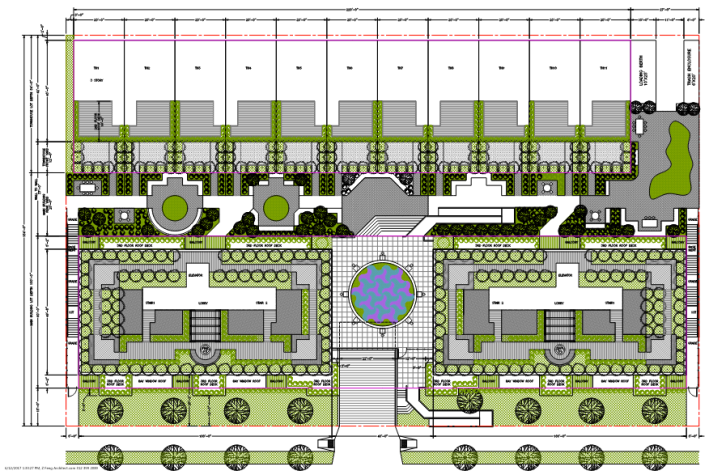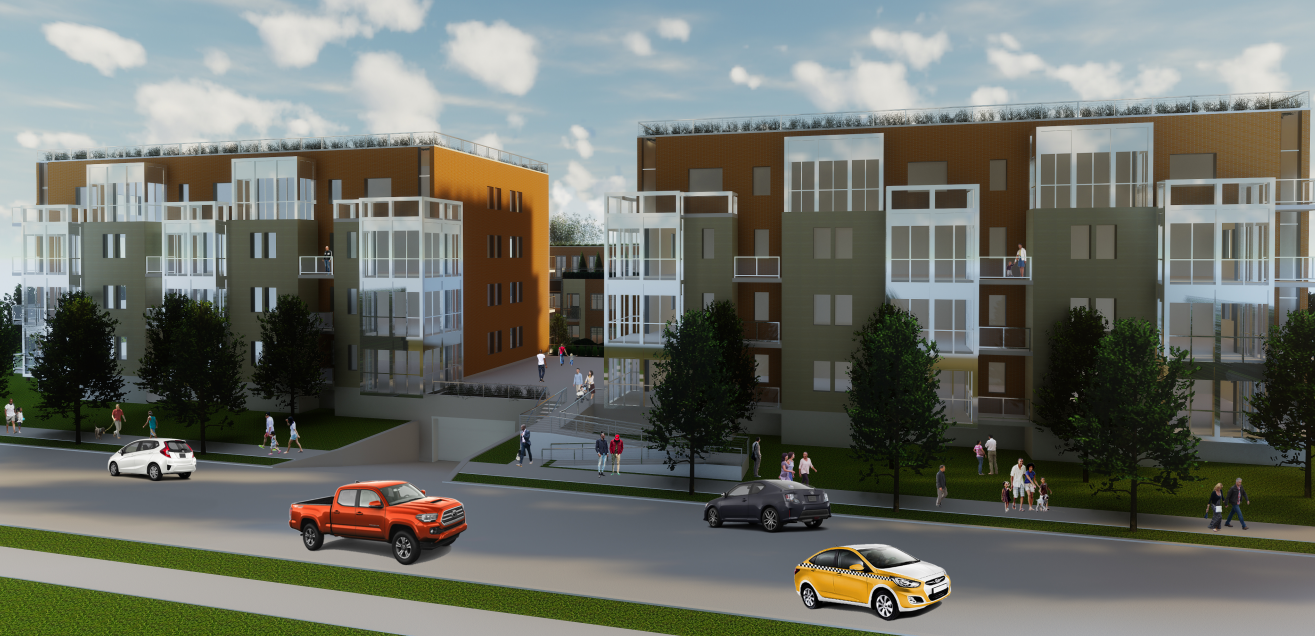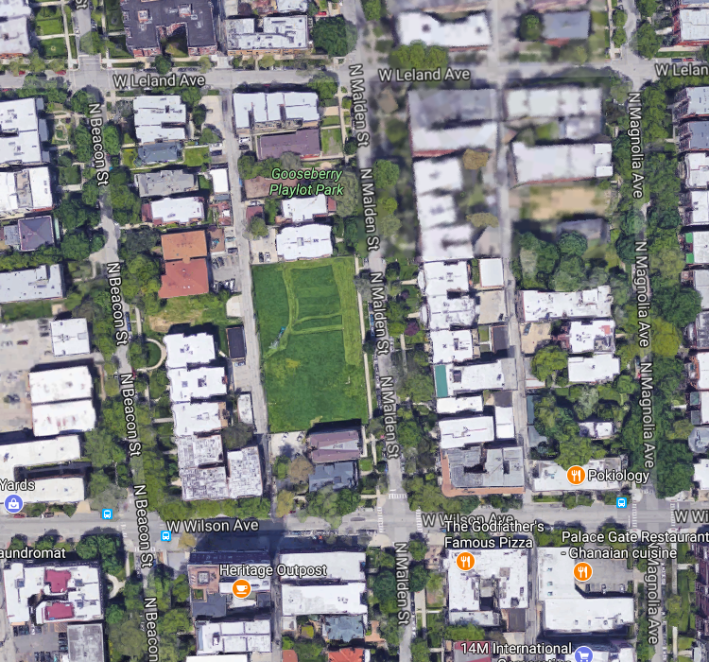Last Thursday, 46th ward alderman James Cappleman held a community meeting to provide a first look at a planned development proposed for 4608-4618 North Malden, a large empty lot located a five-minute walk west of the Wilson 'L' station that has been vacant since 2005. Developer Steve Sgouras’ attorney Andrew Scott presented the plans for eleven 1,800-square-foot, two-to-three-bedroom townhouses and 50 mixed-bedroom apartments on the site, including 47 total parking spaces.
The lot is currently zoned RT-4, which permits “townhomes and low-density, multi-unit residential buildings” according to the city’s zoning code. The developer is seeking a zoning change to RM-4.5, the next step up from the current zoning. The zoning change would permit the developer to build a slightly higher number of dwelling units thanks to a higher floor-area ratio and a small building height increase. Uptown is a neighborhood of varying but generally low building heights; this block and its neighbors have buildings that are mainly three-to-five stories high. By proposing 4.5 stories and a maximum height of 53 feet, the developer and architect are hardly pushing boundaries in terms of height.
Unfortunately the site lies 20 feet outside of the transit-oriented development zone for the Wilson station, so the project is not eligible to have minimum parking requirements waived. However, by building 25 underground parking spaces for the 50 rental units, the developer is providing fewer spots than the 1:1 ratio usually required. Scott noted the trend toward less car use, saying “many people are foregoing spending 400 bucks a month on car payments and insurance. They’d much rather use the 'L,' they like to use Uber or Lyft.” He added that the reconstruction of the Wilson stop, which is nearing completion, will make transit an even more appealing option.
While building less parking and decoupling its cost from renting an apartment are steps in the right direction, unused parking spaces still impact the overall cost of a new development, so getting the number right is important. Scott noted that they “don’t want to saddle anyone with a parking bill if they don’t want it,” but unused parking can still raise your rent. Research shows that an underground parking space in Chicago costs $36,000 to construct, a cost that is passed on to renters if parking spaces go unused. The alderman’s chief of staff Tressa Feher noted that “A lot of the developers in the area who have built 1:1 ratios have half-empty garages.” This information can be used to resist calls from neighbors for more parking spaces.
A concerning aspect of the underground garage is the 23-foot curb cut the developer has proposed for driveway access to the garage. Any driveway creates an additional point of conflict for people walking and bicycling and introduces the possibility of sidewalk blockage. In addition, the developer plans to build a short ramp from the below-grade parking garage to street level, which would potentially create sight line and safety issues. Eliminating the need for a curb cut by moving garage access to the alley could improve safety.
Neighbors at the meeting were also displeased that the Malden curb cut would remove two free parking spaces from Malden. The block is zoned for permit-only parking.

While the amount of parking planned for the development’s rental units is less than usually required, the parking accommodation for the townhouses, which would be located at the rear of the property, is greater than required. The city requires one space per unit at the current and proposed zoning, but each townhome includes a two-car garage with alley access. Despite having previously stated enthusiasm regarding fewer parking spaces for the rental units, Scott said the townhome parking is “maybe a little bit more than actually needed, but from some perspectives, better more than less.” Indeed, it is likely more than actually needed; in the census tract encompassing the proposed development, only 14% of households own two cars.
I asked Scott if the garage space could be converted to livable space should the townhome owner preferred this to space for warehousing automobiles. However, unlike livable space, parking is not calculated in a development’s floor area ratio, which means the garages currently unconvertible. This is an important consideration for new developments, which generally have more parking than pre-war buildings we continue to inhabit, as we work toward a future with fewer cars and increased transportation options.
Overall, the proposed development will bring new housing to a long-vacant lot without adding an excessive number of car spaces, so it represents a step in the right direction. As other developments in the city have proven, however, we can always push the envelope and go lower than a 50 percent parking ratio, even as far as zero spaces for a residential building. Hopefully, the amount of parking included in the design will not be increases after feedback from meeting attendees as it moves into the planned development process. The development is currently in preliminary stages and will next move to the alderman’s zoning & development committee for approval.






